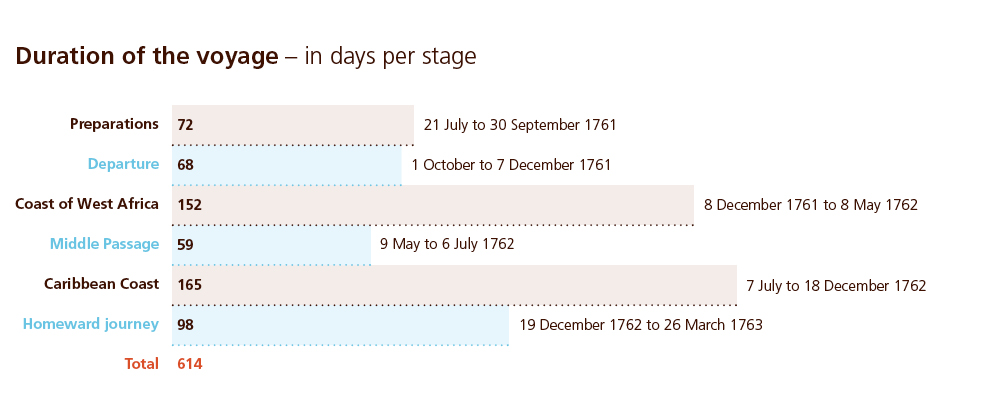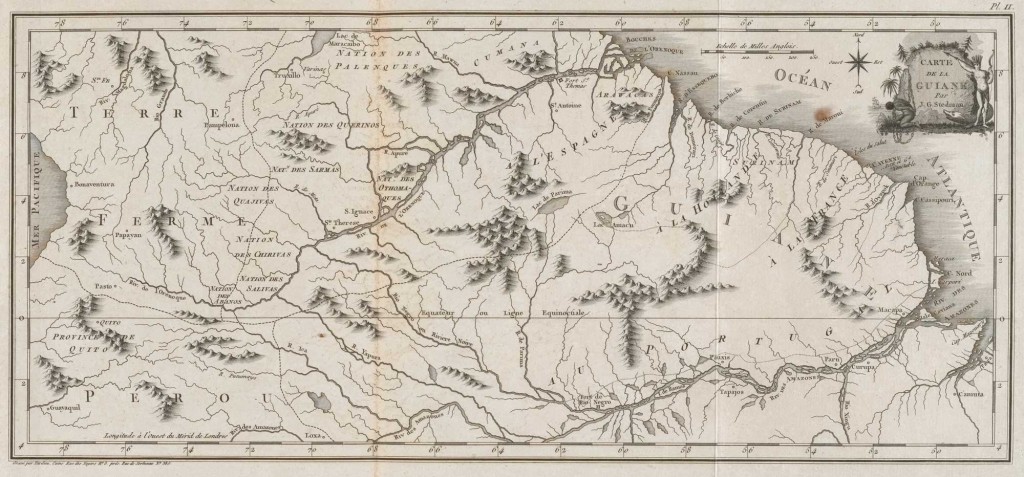On July 7th The Unity arrived in the colony of Berbice, in modern-day Guyana, with 299 slaves on board. This was in accordance with the instructions which the captain had received in Middelburg.
Once in Berbice, the captain organized two auctions to sell the enslaved Africans. Should be prices prove too low in Berbice, the ship was ordered to sail to the colonies of Essequibo and Demerara.
Captain Menkenveld was also responsible for organizing a profitable return cargo. This cargo, usually consisting of Sugar, coffee, cacao and tobacco, could be sold in the Netherlands to increase profits. The lengthy nature of this stage of the voyage shows that finding the return cargo was not easy. With a length of over 23 weeks, this part of the voyage is easily the longest one of het entire trip.
Berbice, Essequibo and Demerara
The Berbice Colony, lying to west of Suriname in modern-day Guana, was founded in 1627 by a Zeeland merchant, Abraham van de Pere. He had received permission from the WIC to found a folk plantatation with 60 colonists. The colony was initially run by the Van de Pere family, but after the short French occupation, control of the colony was soon bought up by a few Amsterdam merchants. The expected growth of the Berbice Colony never materialized, due to disagreements between the WIC and the colony’s management, and a shortage of capital. Lagging payments and a reduced trade with North America and England created a food shortage during the 50’s of the 18th century. In addition, from 1757 onwards, contagious diseases ravaged the colony.
The Essequibo Colony, lying to the west of the Berbice Colony, was founded in 1616 by a few Zeeland colonists who had been driven out of the neigbouring colony Pomeroon by the Spanish. The Demerara Colony, lying in between Berbice and Essequibo, was also put under Essequibo’s administration. The chamber of het WIC in Zeeland had the final say in the colony. As with Berbice, it was the WIC who appointed a Governor to govern the colony in their name.
The two colonies were governed separately from each other. In 1831 Berbice was lost to the British, who had by then already taken over Essequibo and Demerare. The three colonies were then combined into one, to create British Guyana.




